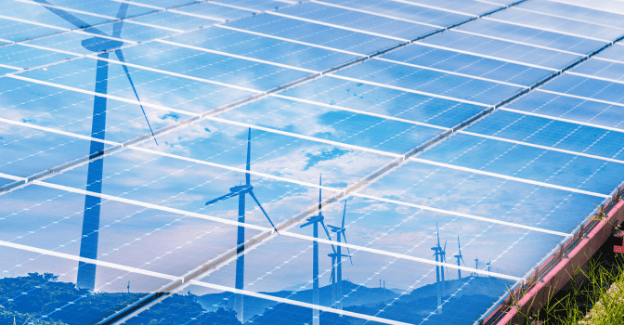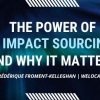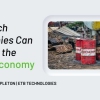Power Purchase Agreements Are the Underused Path to Sustainable Energy
With more than half of the world’s GDP dependent on nature for its resources and services, companies and their supply chains, have an outsized impact on the environment. The stark reality is that corporations continue to increase emissions of toxic greenhouse gases year after year because of their reliance on fossil fuels as a dominant source of energy.
However, in the last few years, the cost of energy from turbines has fallen 10%, while the solar PV cells market has expanded fourfold. The declining cost of energy from sustainable sources coupled with government incentives to adopt renewable energy means switching from fossil fuels will now enable organizations to slash their energy costs and be environmentally sustainable.
For instance, in 2017 Google first achieved its goal of 100% renewable energy for all its operations and has meet 100% of its global electricity every year since by procuring green energy. It, along with other technology leaders including Facebook, Microsoft and Amazon are heading toward 100% reliance on renewable energy. The key to these companies’ success is their adoption of Power Purchase Agreements (PPAs) — electricity supply agreements between energy producers and consumers.
How Power Purchase Agreements Work
There are two ways for companies to incorporate renewable sources of energy. Either organizations generate them on-site — on real estate that organizations own or operate — or they procure the energy from a third party such as a utility or developer, which generates and distributes it at scale. These methods often cause hesitation in companies considering the switch because of concerns such as: How much do we have to invest? How can we finance the switch? Who will maintain the equipment after installation? What vendor should we use to procure equipment?
All these challenges are addressed by a PPA. When entering into a PPA with an energy provider, companies pay a fixed unit price ($/kWh) for the duration of the contract (typically 15 to 20 years) for a defined quantity of energy while the energy provider owns, installs and maintains the equipment used to generate energy. This means companies reap the benefits of cost certainty over long periods of time without worrying about the technicalities or investing valuable CapEx to adopt green energy.
Types of Power Purchase Agreements
There are three basic types of PPAs that companies can utilize to meet their goals:
1. On-site PPA — Businesses with adequately sized real estate spread across regions or with large sites such as distribution centers can leverage this model. A third party, such as SunPower or First Solar, conducts the feasibility study for the location and installs its own equipment, mitigating all technical concerns. Tech companies such as Facebook and Amazon typically enter into such agreements to meet the high energy needs of their data centers.
With an on-site PPA, organizations can lease their owned real estate to third parties that install solar panels or wind turbines to generate energy, which can be used for a fixed contracted price for the duration of the contract. Leasing land also allows for lower contracted rates and creates a win-win situation for both parties.
2. Offsite PPA — If a business doesn’t have access to real estate because of leasing constraints or asset-light business models, it can simply procure renewable energy based on its needs. Here, a developer sets up a large-scale energy generation farm from which the organization buys energy based on its needs with a similar fixed-rate contract. Since the developer can generate at scale and the contract ensures a minimum selling price, it typically sells energy at rates lower than the market price — again, creating a win-win situation.
As one of the most preferred energy solutions, offsite PPAs have seen widespread adoption across all industries, be it pharmaceutical, oil and gas, telecommunications, etc. Even educational institutions are taking part; for example, George Washington University is currently procuring 50% of its electricity needs through an offsite PPA.
3. Virtual PPA — Entering into a VPPA is desirable if the business goal is purely sustainability and not savings. In this case, energy is not transferred; instead, it is a financial instrument used to offset organizations’ non-renewable energy loads as renewable through energy certificates, or RECs. Since this wholly financial method has no implementation considerations, it offers the fastest way for organizations to reach their sustainability goals.
Take McDonalds: Over the last two years, the fast-food giant entered into five such agreements, which are enough to offset the energy demands of nearly 8,000 of its restaurants.
Most companies leverage multiple energy solutions, ranging anywhere from owning solar panels to entering into green pricing agreements with utilities. PepsiCo continues to utilize offsite PPAs to procure wind-based renewable energy but also installs solar panels across its factories. Nestlé, Anheuser-Busch, Cargill and Apple are entering into PPAs across the world to drive their sustainability goals. And, in September of last year, oil major Total SE signed the world’s largest PPA deal for 3GW of solar energy, which will offset the energy needs of its entire European operation. What are you waiting for?









